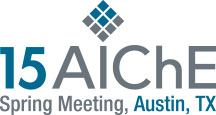

Current trends in the demand of middle distillates are stretching the existing hydrogen production capacity, resulting in a deficit in the refinery hydrogen balance. Previous approaches in the design of refinery hydrogen networks have neglected the integration of hydroprocessors in the overall network optimization, which is critical to bridging the gap between “white papers” and industrial practice. As a result, major interactions between process performance and the hydrogen network are unexploited.
A method for integrating hydrodesulphurisation process models and multicomponent hydrogen network model has been developed [1]. However, hydrocracking units and their associated models were not accounted for in the integrated optimisation of multicomponent hydrogen networks. The present work describes the integration of hydrocracker process models and multicomponent hydrogen network models. An overall feed conversion model and a five-lump experiential yield model has been developed based on the feed characteristics, catalyst properties and process operating conditions. The model is capable of predicting conversion and product yields in hydrocracking processes. The proposed model is validated with different feedstock properties and shows good agreement with industrial data. Of crucial importance is the integration of the models in the overall refinery framework to exploit the interactions between process performance and the hydrogen network. The integrated superstructure consisting of dynamic interactions between hydrocracking processes and the multicomponent hydrogen network is optimized with the CONOPT solver in General Algebraic Modelling System (GAMS). The effects of feed characteristics and operational changes on conversion and product yields are investigated. The results demonstrate expected industrial trends from the effect of changing operating conditions on product yields. As demonstrated in a case study, by integrating hydrocracking models into multicomponent hydrogen networks, the motivation for refinery hydrogen management can now be approached from a realistic and holistic view to optimising hydrogen use.
Reference
1 Umana B, Shoaib A, Zhang N, Smith R. Integrating hydroprocessors in refinery hydrogen network optimization. Applied Energy. 2014; 133:169-182.
